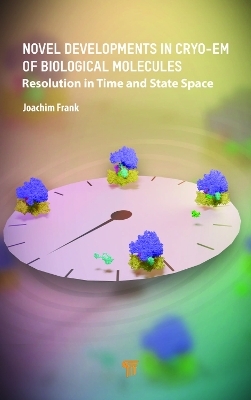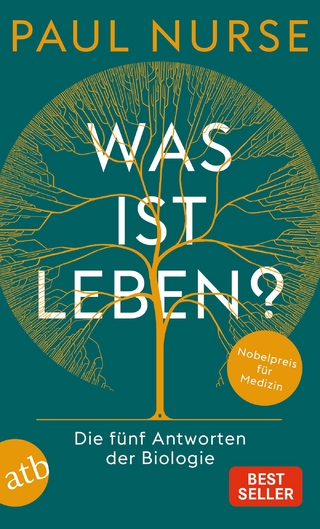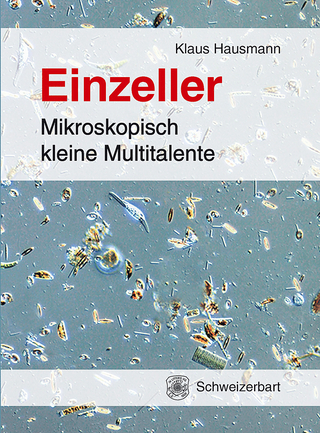
Novel Developments in Cryo‐EM of Biological Molecules
Jenny Stanford Publishing (Verlag)
978-981-4968-76-8 (ISBN)
The book describes a successful approach in which, based on cryo-EM data, all states visited by the molecule in thermal equilibrium are mapped by manifold embedding—a method of geometric machine learning—and the energy landscape of the molecule is derived. It also discusses methods and biological results of time-resolved cryo-EM, following a reaction in a non-equilibrium system over a short period of time and resulting in the capture of short-lived states that have been inaccessible by standard methods of cryo-EM.
Joachim Frank is a professor of biochemistry and molecular biophysics and of biological sciences at Columbia University, USA. Dr. Frank’s lab has developed techniques of single-particle reconstruction of biological macromolecules, specializing in mathematical and computational approaches. He has applied these techniques of visualization to explore the structure and dynamics of the ribosomes during the process of protein synthesis and to elucidate the structure and function of several ion channels. He is a member of the National Academy of Sciences and of the American Academy of Microbiology. He is also a fellow of the American Academy of Arts and Sciences and of the American Association for the Advancement of Science. In 2014, he was honored with the Franklin Medal for Life Sciences. In 2017, he shared the Wiley Prize in Biomedical Sciences with Richard Henderson and Marin van Heel. He was awarded the 2017 Nobel Prize in Chemistry together with Jacques Dubochet and Richard Henderson for "developing cryo-electron microscopy for the high-resolution structure determination of biomolecules in solution."
Part I: Single-Particle Cryo-EM of Molecules in Thermal Equilibrium 1. Generalized Single-Particle Cryo-EM:. A Historical Perspective 2. Advances in the Field of Single-Particle Cryo-Electron Microscopy Over the Last Decade 3. Single‐Particle Reconstruction of Biological Molecules:Story in a Sample (Nobel Lecture) Part II: Machine Learning Applied to Ensembles of Molecules in Thermal Equilibrium: Resolution in State Space 4. Structural Characterization of mRNA-tRNA Translocation Intermediates 5. Trajectories of the Ribosome as a Brownian Nanomachine 6. Continuous Changes in Structure Mapped by Manifold Embedding of Single-Particle Data in Cryo-EM 7. New Opportunities Created by Single-Particle Cryo-EM: The Mapping of Conformational Space 8. POLARIS: Path of Least Action Analysis on Energy Landscapes 9. Propagation of Conformational Coordinates Across Angular Space in Mapping the Continuum of States from Cryo-EM Data by Manifold Embedding 10. Retrieving Functional Pathways of Biomolecules from Single-Particle Snapshots 11. A Glycan Gate Controls Opening of the SARS-CoV-2 Spike Protein 12. Recovery of Conformational Continuum from Single-Particle Cryo-EM images: Optimization of ManifoldEM Informed by Ground Truth Part III: Non-Equilibrium Methods: Resolution in Time 13. Structural Dynamics of Ribosome Subunit Association Studied by Mixing-Spraying Time-Resolved Cryo-EM 14. Two Promising Future Developments of Cryo-EM: Capturing Short-Lived States and Mapping a Continuum of States of a Macromolecule 15. Key Intermediates in Ribosome Recycling Visualized by Time-Resolved Cryo-Electron Microscopy 16. A Fast and Effective Microfluidic Spraying-Plunging Method for High-Resolution Single-Particle Cryo-EM 17. Time-Resolved Cryo-Electron Microscopy: Recent Progress 18. Time-Resolved Cryo-Electron Microscopy Using a Microfluidic Chip 19. Late Steps in Bacterial Translation Initiation Visualized Using Time-Resolved Cryo-EM 20. The Structural Basis for Release Factor Activation During Translation Termination Revealed by Time-Resolved Cryogenic Electron Microscopy 21. A Time-Resolved Cryo-EM study of Saccharomyces cerevisiae 80S Ribosome Protein Composition in Response to a Change in Carbon Source
| Erscheinungsdatum | 10.10.2023 |
|---|---|
| Zusatzinfo | 6 Tables, black and white; 98 Line drawings, color; 23 Line drawings, black and white; 4 Halftones, color; 2 Halftones, black and white; 102 Illustrations, color; 25 Illustrations, black and white |
| Sprache | englisch |
| Maße | 152 x 229 mm |
| Gewicht | 1180 g |
| Themenwelt | Naturwissenschaften ► Biologie ► Zellbiologie |
| Naturwissenschaften ► Physik / Astronomie ► Angewandte Physik | |
| ISBN-10 | 981-4968-76-5 / 9814968765 |
| ISBN-13 | 978-981-4968-76-8 / 9789814968768 |
| Zustand | Neuware |
| Haben Sie eine Frage zum Produkt? |
aus dem Bereich


